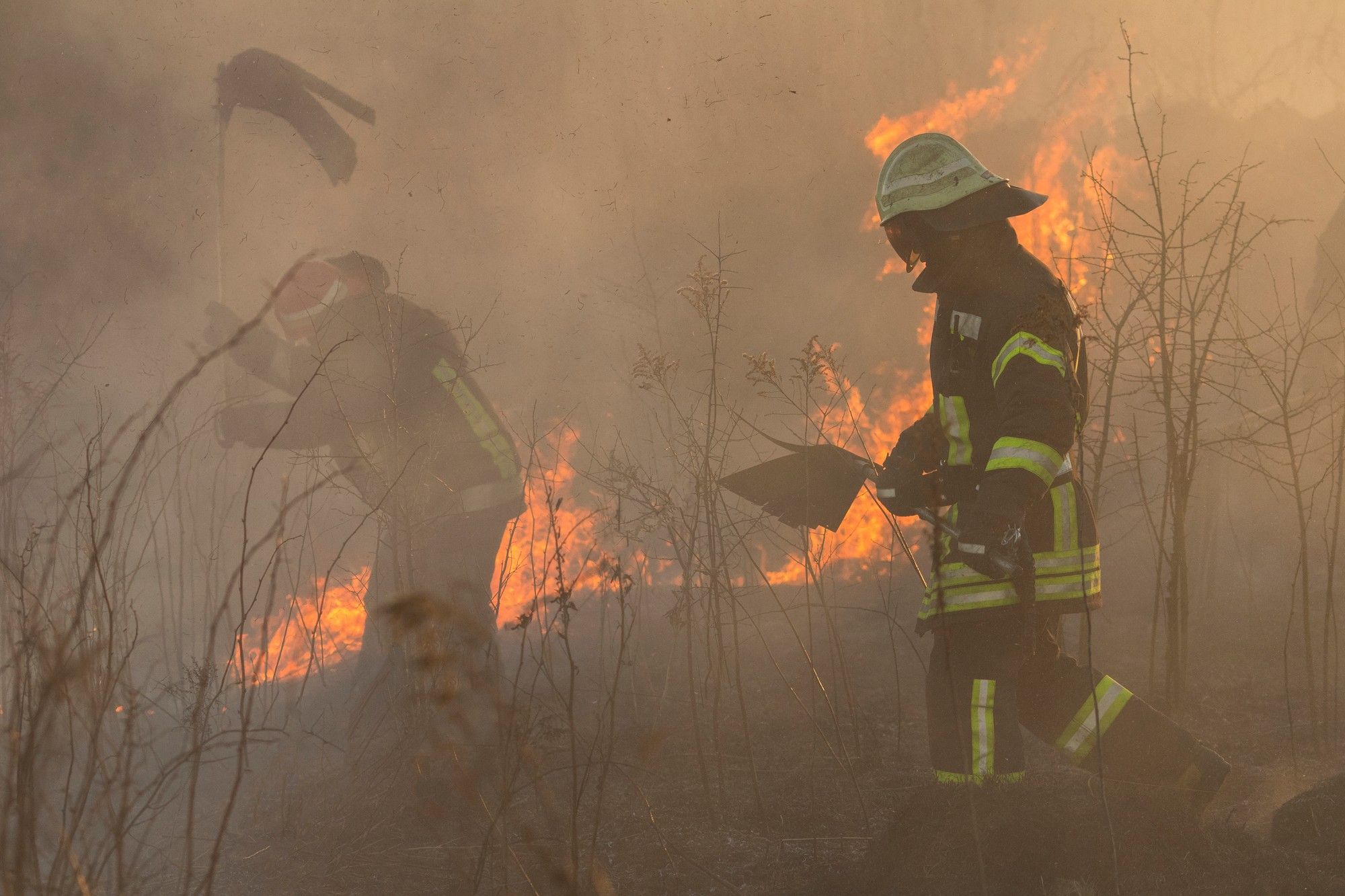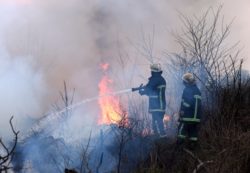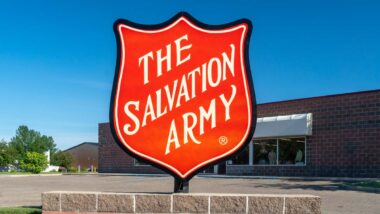Top Class Actions’s website and social media posts use affiliate links. If you make a purchase using such links, we may receive a commission, but it will not result in any additional charges to you. Please review our Affiliate Link Disclosure for more information.
It’s never easy, but the 2020 wildfire season in California is shaping up to be especially dangerous as firefighters battle flames, weather, and COVID-19 and residents scramble to protect themselves from the double threat of fires and the coronavirus pandemic.
Nearly two weeks after Governor Gavin Newsom declared a state of emergency in California, the state has continued to wrestle with many of the conditions that prompted the declaration. Although the massive heat wave and subsequent strain on the state’s power supply began to ease heading into the last weekend in August, weather problems persisted. Since August 15, the state saw almost 14,000 lightning strikes, many of which sparked some 840 new wildfires, according to the California Department of Forestry and Fire Protection, or Cal Fire. Smoke and ash from the fires has contributed to poor air quality, which has the potential to compromise the respiratory health of residents. That puts them at greater risk of contracting COVID-19, which also attacks the respiratory system.
With months left to go, the 2020 wildfire season is one of the most active in state history. As of August 31, more than 1.42 million acres of land have been consumed by more than 7,000 fires. Combined, the scorched earth would comprise an area larger than the state of Delaware, Cal Fire noted. Seven people have reportedly been killed and almost 2,500 buildings burned out.
“But because fire is only one part of the problem, health experts, firefighters, emergency responders and local leaders all report that they are grappling with a multilayered crisis of overwhelming scale, putting enormous burdens on people on the front lines,” a report by NBC News said.
2020 Wildfire Season, Coronavirus Pandemic Enhance Risk of Each
While approximately 16,000 firefighters are working to contain and put down two dozen major standalone fires and “lightning complexes” throughout California, relentless flames have forced more than 60,000 residents to remain evacuated from their homes, according to Cal Fire.
Both the firefighters and the evacuees – as well as those staffing evacuation centers and supporting the front-line responders – are at increased risk of contracting the coronavirus by virtue of having to congregate.
“Whenever we have people who are in constant contact with one another that don’t normally live together, there’s definitely a risk of transmission of COVID,” Sonoma County Health Officer Dr. Sundari Mase was quoted by NBC News as saying at a press briefing August 24.
Many evacuees are being put up in hotels. The evacuation shelters that are open are requiring face coverings, social distancing and sanitizing to try to prevent the spread of the virus, a report by USA Today said.
Meanwhile, when firefighters are off duty and return to their base camps, they are also required to wear face masks and maintain physical distancing, NPR reported. In the past, the base camps were set up near fires in small, concentrated areas. Now, they are either spread out at “vacant fairgrounds outfitted with more hand-washing stations” or staying in hotels.
 Air Quality an Even Bigger Risk
Air Quality an Even Bigger Risk
In any other year, air quality and the risk of smoke inhalation during wildfire season is a moderate concern, and then mostly to those residents who have already compromised respiratory systems.
“The worry this year is that the smoke from wildfires could increase the severity of COVID-19 symptoms,” a report by the University of California at San Francisco says. “Though there have yet to be studies looking specifically at the effect of wildfire smoke on COVID-19, there is preliminary research linking air pollution to increased COVID-19 susceptibility, severity and death,” report quotes Dr. Stephanie Christenson, a medical doctor and professor of pulmonology at UC San Francisco, as saying.
Research has also suggested that breathing wildfire smoke can increase the risk of lower respiratory and lung infections, such as bronchitis and pneumonia by suppressing the body’s immune response, the UC San Francisco report says.
People with respiratory or breathing problems, chronic respiratory conditions, such as asthma, or with lung damage “might be at an increased risk for severe illness from COVID-19” based on the information available, the U.S. Centers for Disease Control and Prevention says.
The CDC recommends residents in the vicinity of wildfires try to limit their exposure to the smoky conditions by staying indoors when air quality is poor and using an air-cleaning device, if possible, indoors.
Challenges Presented Early
Conditions were aligning in a way that set California up for a particularly difficult 2020 wildfire season long before things reached the crisis point that prompted Newsom’s emergency declaration.
The Golden State experienced one of the driest winters on record in 2019-20, which landed parts of the northwest in a severe drought and caused forecasters to predict an above normal potential for large fires this fall. At around the same time, researchers at Stanford University released a study that indicated climate change was significantly expanding California’s traditional wildfire season – both starting it sooner and causing it to last longer.
Then the coronavirus pandemic, and ensuing economic crisis, hit. The financial impact led to a projected $54 billion deficit in the state budget, which forced Newsom in June to abandon plans for a $26 million project to retrofit houses and other buildings in wildfire zones with fire-resistant materials in the hopes of reducing wildfire damage.
In July, a COVID-19 outbreak led state prison officials to place more than 25% of California’s prison fire camps on lockdown, which cut in half the number of trained inmate firefighters available. The inmates have long been an integral part of the state’s firefighting force. They are often among the first called out and work as hand crews, containing wildfires by creating fire lines around them – clearing brush and other “fuel” from the perimeter, according to the U.S. Forest Service.
The region most vulnerable to wildfires, Northern California, was the hardest hit. Almost half the inmate firefighting crews there were sidelined for a time, the San Francisco Chronicle reported.
Join a Free California Wildfire Property Damage Lawsuit Investigation
If you or a loved one suffered property damage in the Camp Fire, Woolsey Fire, Hill Fire or last year’s Thomas Fire, legal help is available to help you through the claim process with your insurance company.
This article is not legal advice. It is presented
for informational purposes only.
ATTORNEY ADVERTISING
Top Class Actions is a Proud Member of the American Bar Association
LEGAL INFORMATION IS NOT LEGAL ADVICE
Top Class Actions Legal Statement
©2008 – 2024 Top Class Actions® LLC
Various Trademarks held by their respective owners
This website is not intended for viewing or usage by European Union citizens.
Get Help – It’s Free
Join a Free California Wildfire Property Damage Lawsuit Investigation
If you qualify, an attorney will contact you to discuss the details of your potential case at no charge to you.
PLEASE NOTE: If you want to participate in this investigation, it is imperative that you reply to the law firm if they call or email you. Failing to do so may result in you not getting signed up as a client or getting you dropped as a client.
E-mail any problems with this form to:
Questions@TopClassActions.com.
Oops! We could not locate your form.


 Air Quality an Even Bigger Risk
Air Quality an Even Bigger Risk










